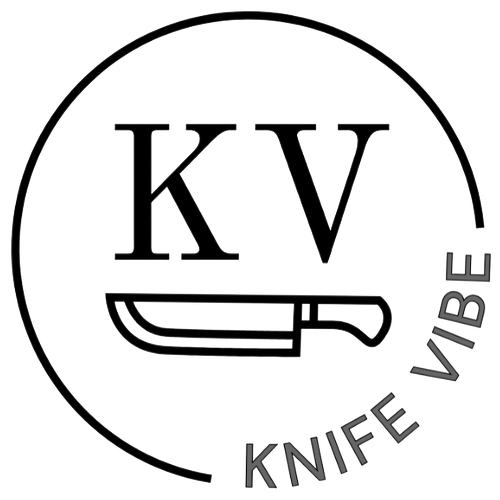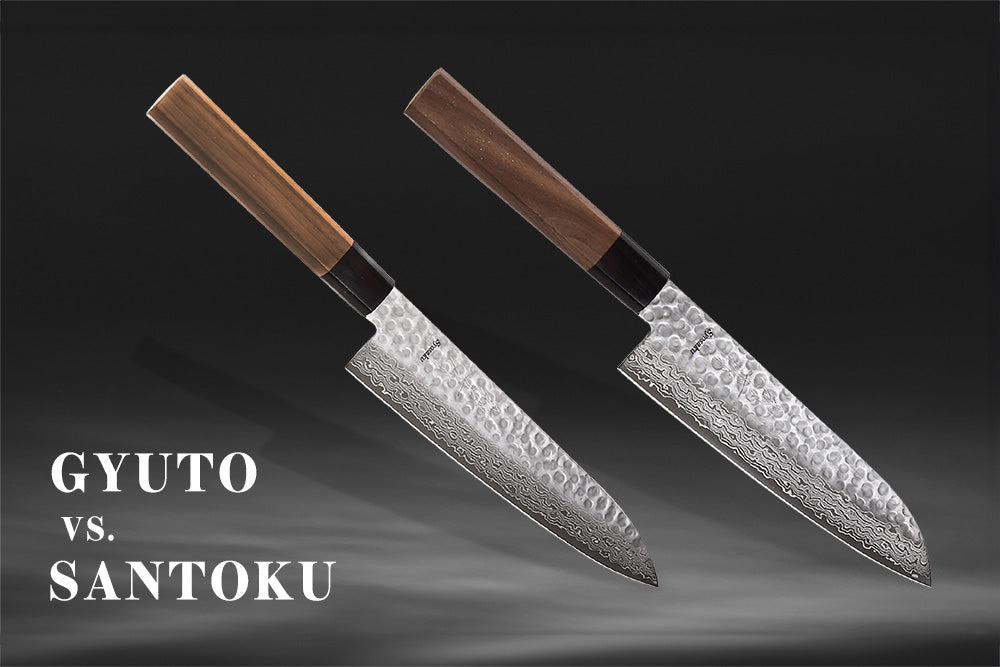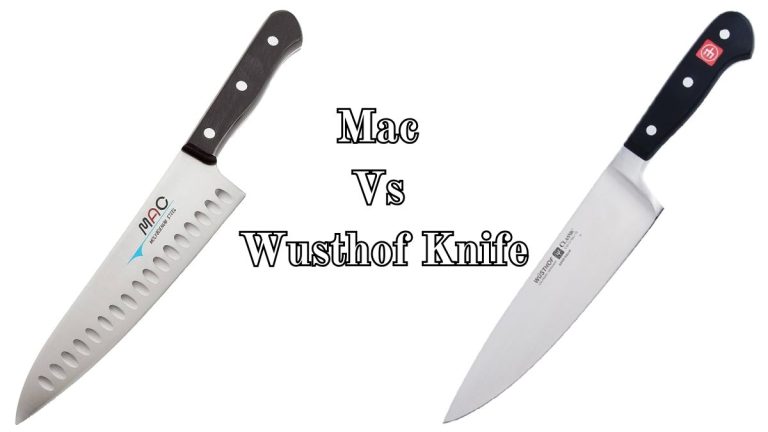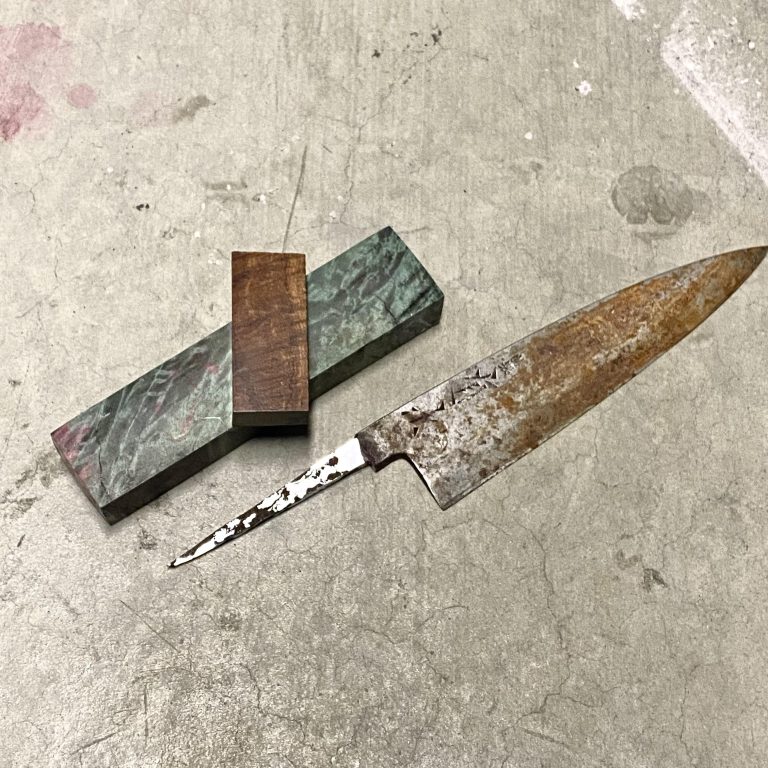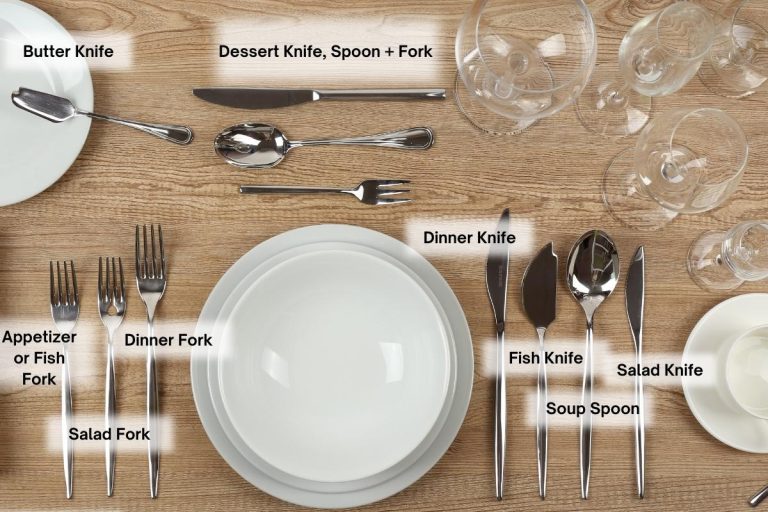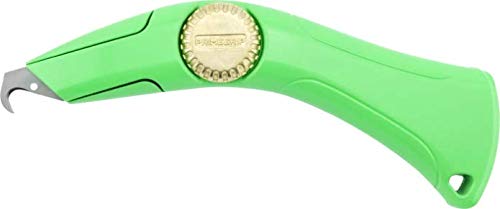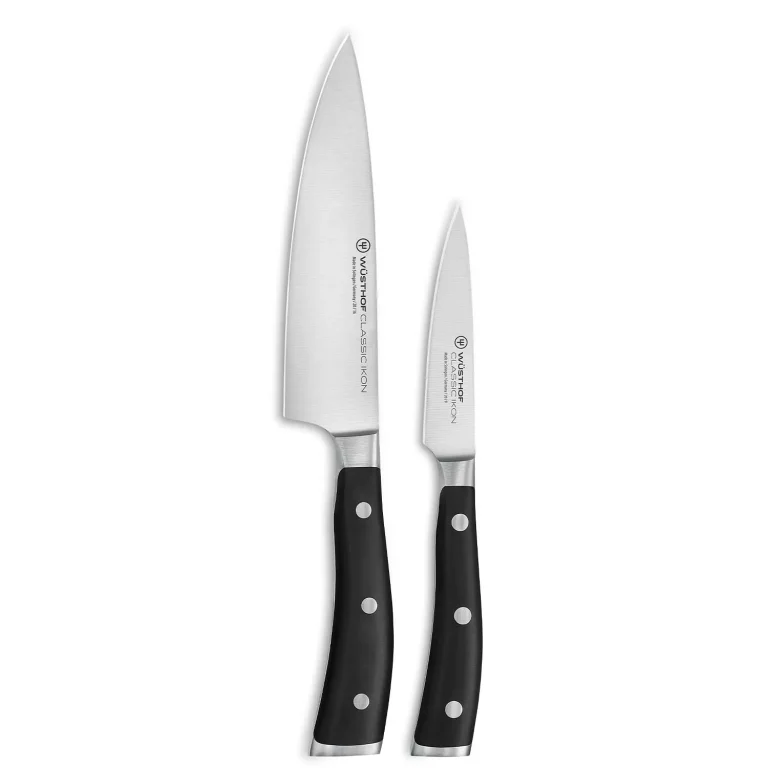Gyuto Knife Vs Santoku: Choosing the Perfect Kitchen Companion
Choosing the right kitchen knife can be a tough decision. Two popular options are the Gyuto and the Santoku knives.
Each has unique features and benefits, making the choice a bit tricky. Comparing the Gyuto knife and the Santoku knife helps in understanding their uses. Both knives come from Japan and serve different purposes in the kitchen. The Gyuto, similar to a Western chef’s knife, is versatile and handles various tasks well.
The Santoku, on the other hand, is known for its precision and ease of use, perfect for slicing, dicing, and mincing. Knowing the differences between these two knives can help you make an informed decision, ensuring you choose the right tool for your cooking needs.

Credit: www.thebladerunner.com.au
Gyuto Knife Basics
The Gyuto knife is a versatile tool in the kitchen. It’s the Japanese version of the Western chef’s knife. Cooks use it for slicing, dicing, and chopping. Let’s dive into its history and key features.
History And Origin
The Gyuto knife has its roots in Japan. Gyuto means “cow sword” in Japanese. This name reflects its original use for cutting meat. In the 19th century, Japanese blacksmiths created the Gyuto by blending Western and Japanese styles. The result was a knife that could handle a wide range of tasks.
Key Features
The Gyuto knife has several distinct features:
- Blade Length: Usually ranges from 8 to 12 inches.
- Blade Shape: Has a gentle curve towards the tip.
- Edge: Double-edged, making it suitable for both left and right-handed users.
- Material: Often made from high-carbon steel or stainless steel.
- Handle: Typically made from wood or synthetic materials for a comfortable grip.
These features make the Gyuto knife perfect for various kitchen tasks. Its sharp edge and balanced design ensure precision and ease. Whether cutting vegetables or slicing meat, the Gyuto knife excels in performance. Its versatility is unmatched in the kitchen.

Credit: syosaku-japan.com
Santoku Knife Basics
The Santoku knife is a popular choice in kitchens around the world. It is known for its versatility and ease of use. This knife is an essential tool for many chefs and home cooks. Let’s dive into the basics of the Santoku knife.
History And Origin
The Santoku knife originated in Japan. The name “Santoku” means “three virtues” or “three uses.” These uses refer to slicing, dicing, and mincing. The knife was developed in the mid-20th century. It combines elements of both Western and Japanese knives.
Key Features
The Santoku knife has several distinct features:
- Blade Length: Typically 5 to 7 inches long.
- Blade Shape: Flat edge and sheepsfoot blade.
- Blade Material: Often made from high-carbon stainless steel.
- Handle: Usually ergonomic for a comfortable grip.
These features make the Santoku knife ideal for various kitchen tasks. Its shorter blade offers better control. The flat edge allows for cleaner cuts. The ergonomic handle reduces hand fatigue.
| Feature | Description |
|---|---|
| Blade Length | 5 to 7 inches |
| Blade Shape | Flat edge, sheepsfoot blade |
| Blade Material | High-carbon stainless steel |
| Handle | Ergonomic |
Blade Design And Shape
When choosing between a Gyuto knife and a Santoku knife, understanding their blade design and shape is crucial. These elements influence the knife’s performance, cutting style, and suitability for different tasks. Let’s explore the unique characteristics of each blade to help you make an informed decision.
Gyuto Blade Characteristics
The Gyuto blade is known for its versatility. It is the Japanese equivalent of a Western chef’s knife. The blade typically measures between 8 to 12 inches long. Gyuto knives have a curved edge, allowing for a rocking motion while cutting. This design is ideal for slicing, dicing, and chopping a variety of foods.
Key features of the Gyuto blade include:
- Curved edge for smooth rocking motion
- Long blade for slicing large ingredients
- Sharp tip for detailed work
- Wide blade for scooping up chopped items
Gyuto knives are often made from high-carbon steel, providing excellent sharpness and edge retention. They are well-suited for professional chefs and home cooks who need a reliable, all-purpose knife.
Santoku Blade Characteristics
The Santoku blade is shorter and lighter compared to the Gyuto. It usually measures between 5 to 7 inches long. The word “Santoku” translates to “three virtues,” referring to its ability to slice, dice, and mince. The blade has a sheep’s foot tip and a flat cutting edge, which is perfect for a chopping motion.
Key features of the Santoku blade include:
- Flat edge for efficient chopping
- Shorter blade for greater control
- Sheep’s foot tip for safety
- Hollow edge to reduce food sticking
Santoku knives are typically made from stainless steel, offering good durability and ease of maintenance. They are ideal for home cooks who prefer a lighter, more agile knife for everyday kitchen tasks.
| Feature | Gyuto | Santoku |
|---|---|---|
| Blade Length | 8-12 inches | 5-7 inches |
| Edge | Curved | Flat |
| Tip | Sharp | Sheep’s foot |
| Material | High-carbon steel | Stainless steel |
Cutting Techniques
Choosing the right knife can transform your cooking experience. Cutting techniques differ between knives. Understanding these differences helps in selecting the right tool for your needs. Let’s explore the techniques for two popular knives: the Gyuto and the Santoku.
Gyuto Knife Techniques
The Gyuto knife, known as the Japanese chef’s knife, excels in various cutting tasks. It’s perfect for slicing, dicing, and chopping. Its sharp edge and pointed tip are ideal for precision cuts. Use a rocking motion for herbs and vegetables. This technique ensures even cuts and saves time. The Gyuto also works well for slicing meat. Its long blade allows for smooth, continuous strokes. This reduces the need for sawing motions, keeping the meat intact.
Santoku Knife Techniques
The Santoku knife, meaning “three virtues,” handles slicing, dicing, and mincing. Its shorter, wider blade suits quick, straight-down cuts. Use a tap-chop method for vegetables. This ensures even, quick results. The Santoku’s flat edge also aids in scooping chopped food. This makes transferring ingredients easier. For meats, the Santoku performs precise, thin slices. Its lightweight design adds to your control, ensuring clean cuts.
Versatility In The Kitchen
In any kitchen, having versatile tools is essential. The Gyuto knife and Santoku knife are popular choices. Each offers unique advantages. Let’s explore their applications.
Gyuto Knife Applications
The Gyuto knife is a Japanese version of the Western chef’s knife. It is known for its versatility.
- Chopping Vegetables: The Gyuto excels at chopping vegetables. Its long blade makes slicing easy.
- Cutting Meat: This knife is perfect for cutting meat. Its sharp edge ensures clean cuts.
- Slicing Fish: With its thin blade, the Gyuto slices fish smoothly. Perfect for sushi.
The Gyuto is a multi-purpose knife. It can handle various tasks efficiently.
Santoku Knife Applications
The Santoku knife is another versatile tool. It is shorter and has a different shape.
- Mincing: The Santoku is excellent for mincing herbs and garlic. Its flat blade makes it easy.
- Precision Cuts: Ideal for precision cuts like dicing onions. The shorter blade offers more control.
- Slicing Vegetables: This knife is great for slicing vegetables. The dimples on the blade reduce sticking.
The Santoku is perfect for detailed kitchen work. It is user-friendly and precise.
| Feature | Gyuto Knife | Santoku Knife |
|---|---|---|
| Blade Length | Longer | Shorter |
| Best For | Chopping, Cutting Meat | Mincing, Precision Cuts |
| Design | Traditional Chef’s Knife | Flat Blade with Dimples |
Both knives bring unique benefits to the kitchen. Choose the right one for your needs. Happy cooking!
Maintenance And Care
Proper maintenance and care can extend the life of your Gyuto or Santoku knife. Both types of knives require regular upkeep to remain sharp and efficient. This section will guide you through key maintenance practices.
Sharpening And Honing
Sharpening your Gyuto or Santoku knife is essential for performance. Use a whetstone or a sharpening tool. Sharpen the blade at a 15-degree angle for Gyuto knives. For Santoku knives, a 10 to 15-degree angle works well. Honing helps maintain the edge between sharpening sessions. Use a honing rod to realign the blade.
Cleaning And Storage
Proper cleaning ensures your knife stays in good condition. Always hand wash your Gyuto or Santoku knife with mild soap and warm water. Avoid dishwashers as they can damage the blade. Dry the knife immediately to prevent rust.
For storage, use a knife block or magnetic strip. This prevents damage to the blade and keeps it sharp. Avoid storing knives in drawers where they can get dull or damaged.
Choosing The Right Knife
Choosing the right knife for your kitchen can make a significant difference in your cooking experience. Whether you are an amateur cook or a professional chef, having the right knife can enhance your precision and efficiency. Let’s delve into the factors to consider and personal preferences when choosing between a Gyuto knife and a Santoku knife.
Factors To Consider
When selecting a knife, it’s important to consider a few key factors. These factors will help you decide if a Gyuto or Santoku knife is the best fit for you.
| Factor | Gyuto Knife | Santoku Knife |
|---|---|---|
| Blade Length | Typically 8-12 inches | Typically 5-7 inches |
| Blade Shape | Curved edge for rocking motions | Flat edge for chopping |
| Weight | Heavier for more control | Lighter for easier handling |
| Versatility | Great for slicing, dicing, and chopping | Best for chopping, slicing, and mincing |
Personal Preferences
Your personal preferences play a significant role in choosing the right knife. Here are some aspects to consider:
- Comfort: How the knife feels in your hand is crucial. The Gyuto knife may feel more balanced due to its weight. The Santoku knife is lighter, which may be easier to handle for some.
- Cutting Style: If you prefer a rocking motion, the Gyuto knife’s curved edge is ideal. If you favor a chopping motion, the Santoku knife’s flat edge will be more suitable.
- Tasks: Consider the tasks you perform most often. The Gyuto is versatile for various tasks, while the Santoku excels in chopping and slicing.
By considering these factors and your personal preferences, you can choose the knife that best suits your needs. Both the Gyuto and Santoku knives have their unique advantages, making them valuable additions to any kitchen.

Credit: kotaikitchen.com
Frequently Asked Questions
What Is A Gyuto Knife?
A Gyuto knife is a versatile Japanese chef’s knife. It is used for slicing, chopping, and dicing. It has a thin, sharp blade.
What Is A Santoku Knife Used For?
A Santoku knife is used for general kitchen tasks. It excels at slicing, dicing, and mincing. It has a flat edge and sheepsfoot blade.
How Are Gyuto And Santoku Knives Different?
Gyuto knives have a curved blade, while Santoku knives have a flat edge. Gyuto is more versatile, Santoku is good for precision.
Which Is Better For Chopping Vegetables?
Santoku knives are better for chopping vegetables. They have a flat edge and offer precise, clean cuts.
Conclusion
Choosing between a Gyuto and a Santoku knife depends on your needs. Both knives offer unique benefits. Gyuto knives excel at slicing and dicing. Santoku knives shine in precision cuts and versatility. Consider your cooking style and comfort. Both knives are excellent tools for any kitchen.
Try both and see which fits your hand better. Your cooking will benefit from the right choice. Happy cooking!
